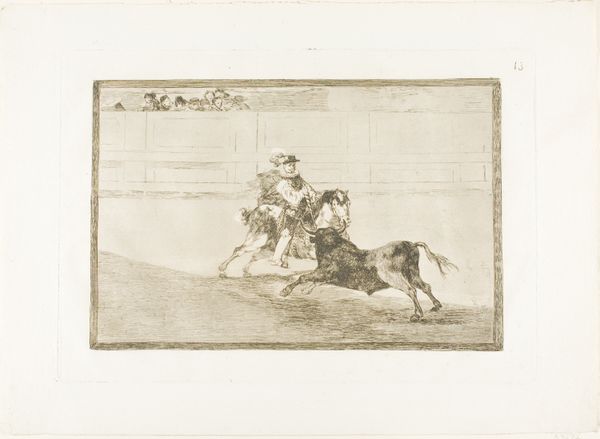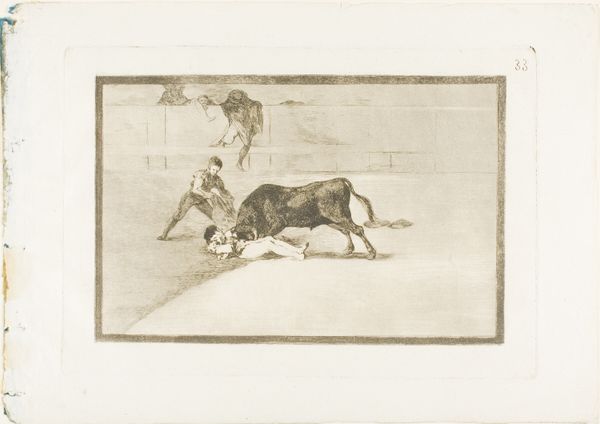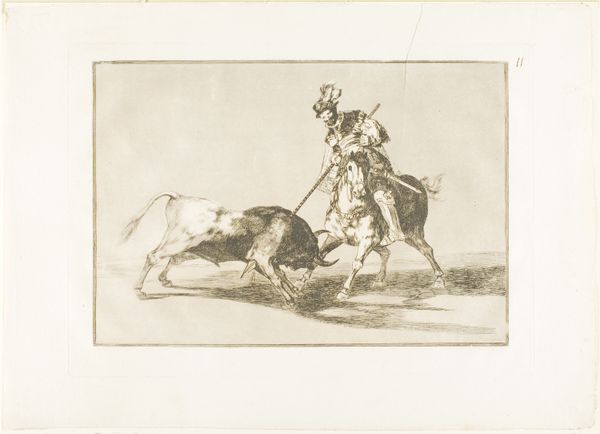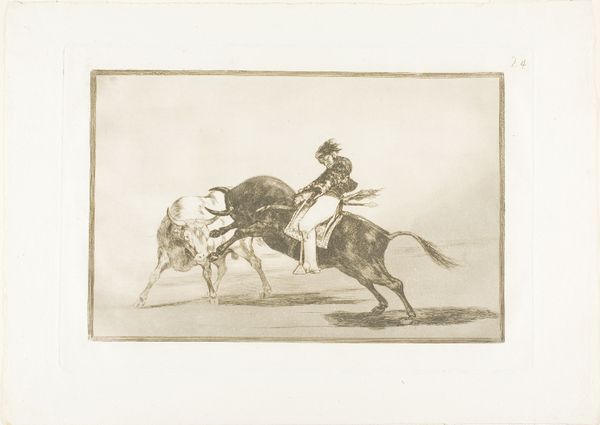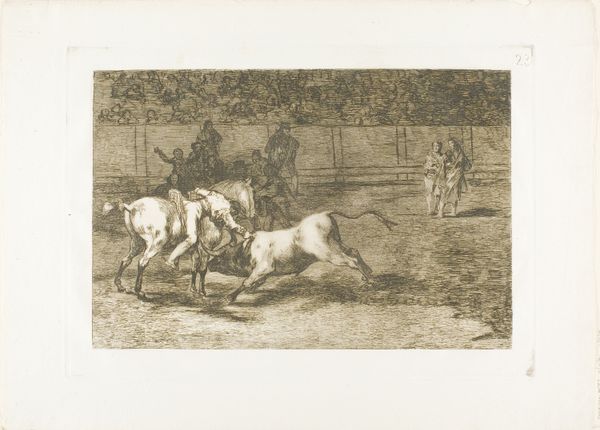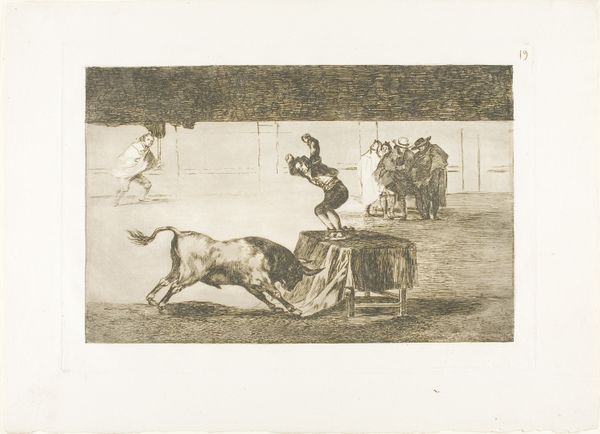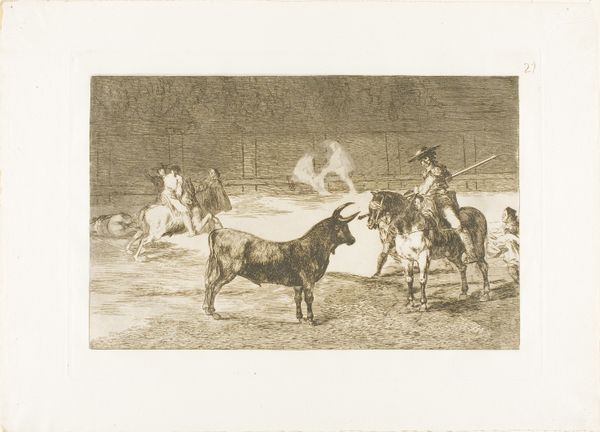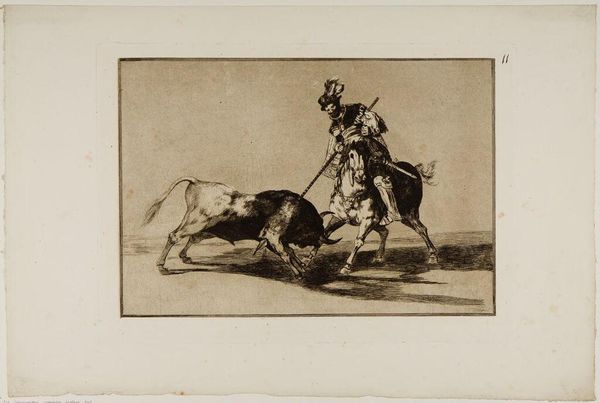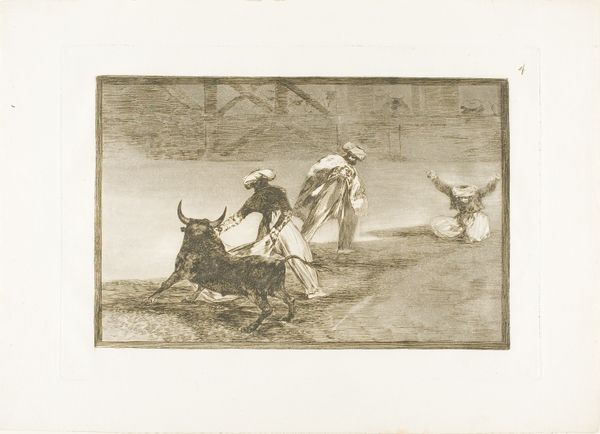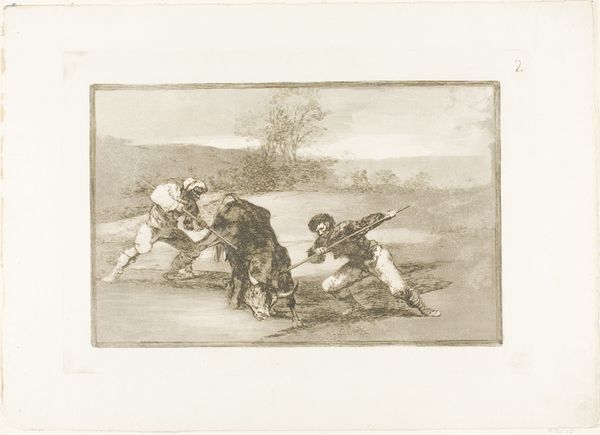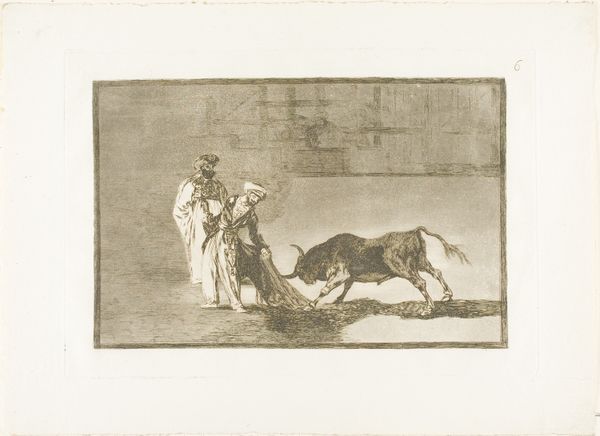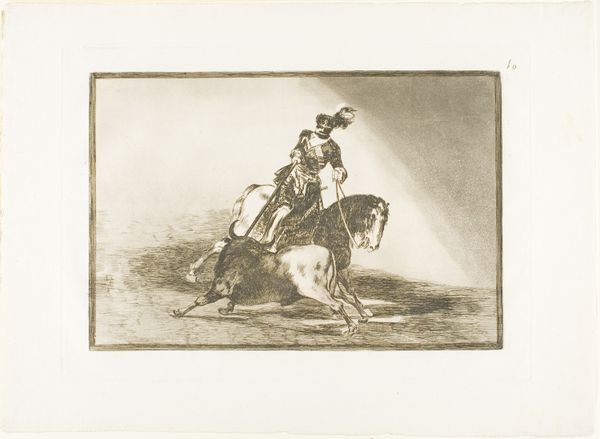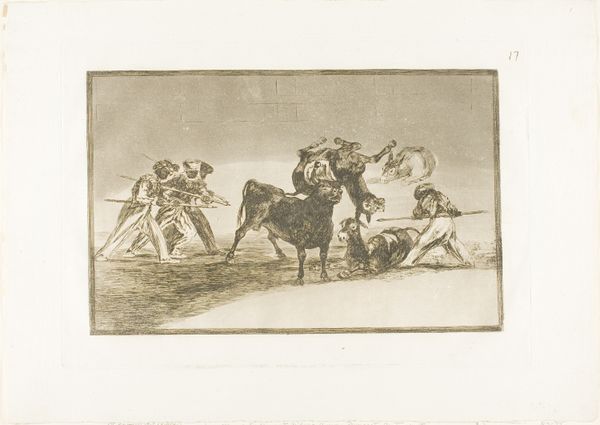
Manly courage of the celebrated Pajuelera in the ring at Saragossa, plate 22 from The Art of Bullfighting Possibly 1814 - 1816
0:00
0:00
drawing, print, etching, paper
#
portrait
#
drawing
# print
#
etching
#
paper
#
genre-painting
#
history-painting
Dimensions: 207 × 308 mm (image); 252 × 353 mm (plate); 316 × 445 mm (sheet)
Copyright: Public Domain
Editor: Here we have "Manly courage of the celebrated Pajuelera in the ring at Saragossa," a print by Francisco de Goya, likely from between 1814 and 1816. It's an etching on paper and the scene is quite dynamic, focusing on a woman on horseback facing a bull. What's particularly striking, even unsettling, is the title itself, with this contrast between manliness and a female subject. What are your thoughts when you look at this print? Curator: It's essential to consider the social context of 19th-century Spain. Bullfighting was a deeply ingrained part of the culture, embodying ideas about courage, masculinity, and national identity. However, Goya's choice to depict a woman in this traditionally male role challenges those very concepts. We need to question how gender roles are being portrayed, and whether Goya is celebrating or critiquing them. Editor: So you think Goya is intentionally playing with the concept of gender, rather than just depicting a historical event? Curator: Precisely. Goya was often a social commentator. He asks us to unpack who gets to perform 'courage' and in what circumstances. Who is the spectacle really *for*? Consider also the spectators visible in the background - what does it tell us about who could, and could not, perform this type of courage? It's vital to acknowledge this historical moment in bullfighting but view it through a critical lens of gender and societal expectation. Editor: That makes me think about how art can actively participate in re-writing historical narratives. It is like Goya is setting up the space for a dialogue to begin around conventional gender norms and Spain's historical tradition. Curator: Yes, art becomes a space for dialogue. This is not just an etching on paper, but a statement which fosters a modern view that pushes up against the foundations of traditional culture, allowing new modes of thought to occur.
Comments
No comments
Be the first to comment and join the conversation on the ultimate creative platform.
